Legal requirements on lights
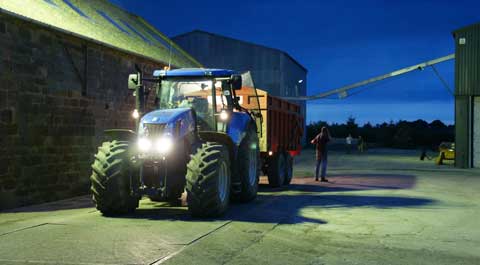
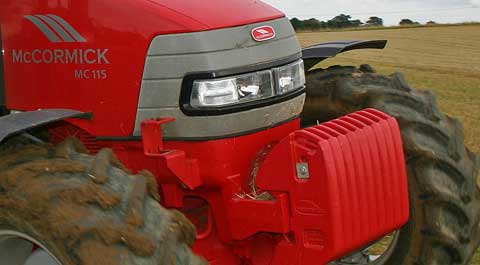
>15mph: Dipped-beam headlamp, matching pair, coloured white or yellow*
>25mph: Main-beam headlamp, matching pair, coloured white or yellow*
* These lights are not required for tractors first used before April 1986
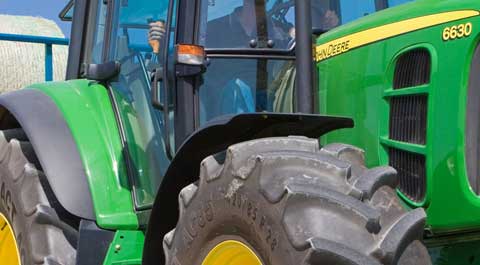
Any speed: Front position lamps (side lights), matching pair, coloured white
>15mph: Direction indicator/hazard warning flasher, matching pair, coloured amber*
* These lights are not required for tractors first used before April 1986
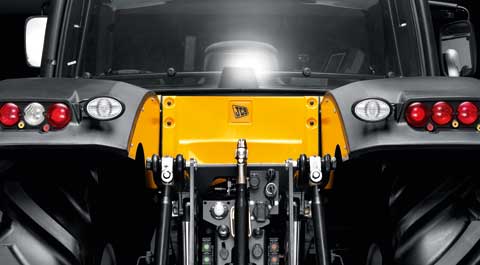
Any speed: Rear retro-reflector, two required, coloured red
Rear position lamps (tail lights) Matching pair, coloured red
Rear registration plate light One required, coloured white
>15mph: Direction indicator/hazard warning flasher, matching pair, coloured amber*
>25mph: Rear fog lamp, matching pair, coloured red*
Stop lamp (brake lamp) Two required, one each side, coloured red*+If rear clusters are obscured by an implement (eg fertiliser spinner), they should also be placed behind the implement so that they are visible to traffic approaching from the rear.
* These lights are not required for tractors first used before April 1986
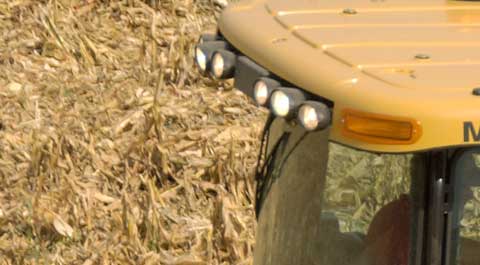
Work lamps: It is illegal to use rear-facing white lights on the road – ensure these are switched off. Work lamps should not be used on a public highway.
![]()
Warning beacon: For tractors usually travelling below 25mph, a flashing or rotating amber warning beacon may be used where necessary to warn other traffic. When travelling along a dual carriageway it must be used. The lamp should be at least 1,200 mm above the ground, and the light should be visible from at least one beacon (but not necessarily the same beacon) from any point at a reasonable distance from the vehicle (i.e. through a full 360°).
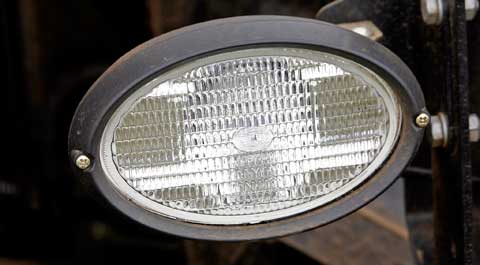
Front position lights (side lights), matching pair, coloured white (unless overall width is less than 1.6m or, if manufactured before 1 October 1985, overall length excluding draw bar does not exceed 2.3m)
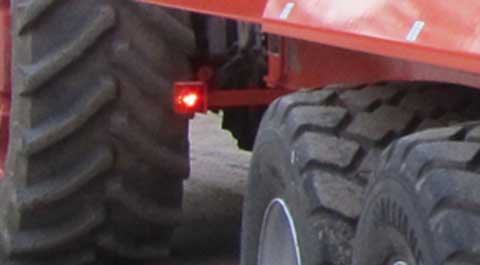
>25mph: side retro reflectors, one each side every 3m (unless overall length excluding draw bar does not exceed 5m), coloured amber or white (red if rear-facing)>25mph: side marker lamp, one each side every 3m (unless overall length excluding draw bar does not exceed 9m), coloured amber or white (red if rear-facing)
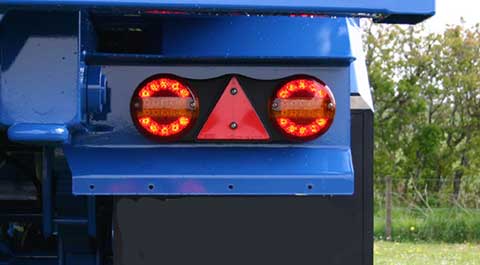
Direction indicators/hazard warning flashers: Matching pair, colour amber (unless manufactured before 1 October 1980.
Alll other rear-facing lamps: Same as for rear-facing tractor cluster.
If you are interested in increasing the visibility of your vehicles, you may want to consider installing secondary brake and indicator lights a little higher up on the trailer to better warn following traffic of your intentions.
Lights are not required on a tractor and/or trailer which is only used on the road during the hours of daylight, in conditions of good visibility.
If this is the case, the driver should use hand signals to indicate changes of direction and when he is slowing down.
Bearing in mind the difficulty for following traffic of seeing the tractor driver, especially when using a trailer, it is strongly recommended to always have direction indicators and stop lamps fitted to the trailer (and working).
If lamps are fitted even though not required, they must comply with requirements of Road Vehicle Lighting Regulations (ie they should work)Find the best tractor headlight bulbs: How LEDSs are making tractors and trailers safer
DfT information sheet on agricultural tractors. Brief guide from the Department for Transport that gives an overview of the legal requirements when taking tractors on the road, with links through to further information.
DfT information sheet on agricultural trailers. Brief guide from the Department for Transport that gives an overview of the legal requirements for trailers on the road, with links through for more information.
Agricultural vehicles – An examiners guide. Detailed guide to the legal requirements for tractors and trailers provided by VOSA. The layout is good and easy to follow. VOSA also has a helpline to answer specific queries from road users – 0300 123 9000.
NFU Business Guide on high-speed agricultural vehicles. Detailed guide to legislative requirements (available to NFU members only)

